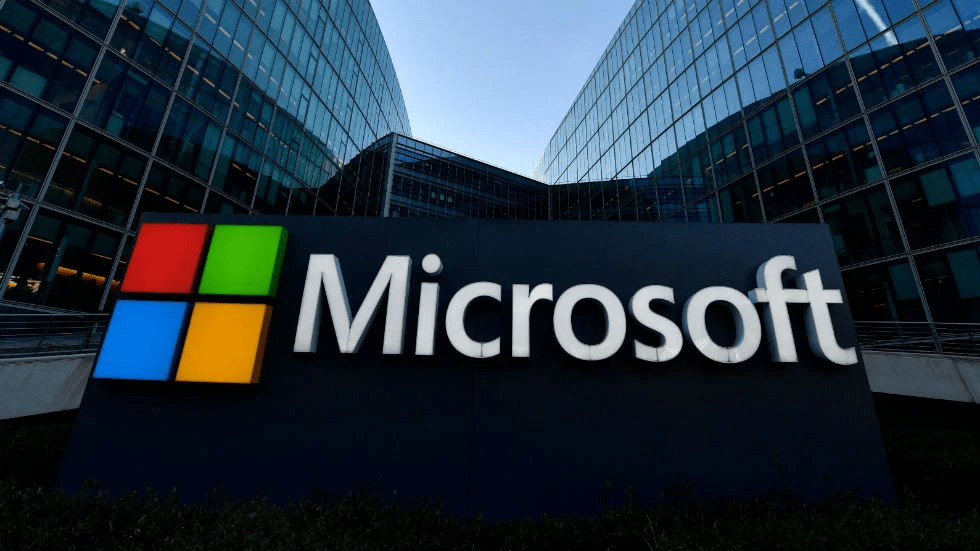Tech
Game of the year 2019: TechRadar’s favorite Xbox One, PS4, Nintendo Switch and PC titles – TechRadar

It’s been an interesting year for gaming, as the current generation of consoles slowly creep towards the end of their lifecycles. The PS5 and Xbox Series X are officially on the way, landing in late 2020, meaning we’re in a kind of limbo between developers releasing games for this generation and announcing plans for next-generation games – some might even crossover.
Despite being in this weird limbo, we’ve played some fantastic games this year. We’ve revisited Raccoon City, cursed FromSoftware once again, tried to catch em’ all and bothered villagers as a troublesome goose. But which games have truly stood out in 2019?
It’s been a hard task, but the TechRadar team has put their heads together and thrashed out which games were our favorites this year. These aren’t necessarily the games we think have had the most cultural or technological impact, nor are they ranked, they’re simply the team’s favorite games from this year. Let’s be honest, you may not agree with all our picks – as we all have different tastes and opinions – but it’s hard to put together a list that will please everyone.
So, without further ado, these are TechRadar’s games of the year 2019.
Best Virtual Reality Game
Blood & Truth
Blood & Truth is one of our favorite VR games ever, never mind this year. Sony London Studio truly knocked it out of the park with this Guy Ritchie style FPS that shows that VR shooters can be wondefully immersive – and downright fun.
Its storyline is super cheesy but, mechanically, Blood & Truth is a marvel, allowing you to interact with objects and weapons as you would in real life (well as much as is possible in VR) and smoothly move from cover to cover through levels.
Honorable mentions: Trover Saves the Universe and Wolfenstein: Cyber Pilot.
Read more: Blood and Truth: how Sony’s London Studio is taking VR to the next level.
Best Mobile Game

Pokémon Masters
Pokémon Masters was somewhat of a surprise success. We always knew it wouldn’t hold a light to Niantic’s Pokémon Go, but the free-to-play mobile game has definitely held its own in 2019.
Allowing players to battle their way through the Pokémon Masters League, Pokémon Masters emphasizes teamwork and puts the focus on trainer battles. It’s been a great year for Pokemon.
Honorable mentions: What the Golf? and Sayonara Wild Hearts.
Best Action Game

Sekiro: Shadows Die Twice
FromSoftware isn’t known for making easy breezy games and Sekiro is no different. But that’s exactly why we love it. Sekiro is what happens if DDR was an action game set in a gothic ancient Japan. It’s breathtaking.
However, if you can’t quite get a hang of the rhythm, then things are pretty tough going. FromSoftware’s most recent offering is more punishing than we’ve seen before, but rare moments of success are extremely rewarding – you just need the patience for it.
Honorable mentions: Resident Evil 2 Remake and Devil May Cry 5.
Check out our full Sekiro: Shadows Die Twice review.
Best Action/Adventure Game

The Legend of Zelda: Link’s Awakening
2019 has been a fantastic year for remasters and Link’s Awakening is one of the best. Nintendo took the original 1993 and redesigned it for the Switch, giving it a new toy-like art style that simply adds to the charm.
Link’s Awakening brings classic Zelda to a younger generation, while improving upon issues that original fans may have had. It’s a wonderful trip down memory lane for fans while also being easily accessible for newbies. We love it.
Honorable mentions: Luigi’s Mansion 3 and Bloodstained: Ritual of the Night.
Check out our full The Legend of Zelda: Link’s Awakening review.
Best RPG

The Outer Worlds
When Obsidian Entertainment announced it was releasing a new RPG, there was little doubt that the Fallout: New Vegas developer would let us down. And it didn’t.
Although it’s not totally perfect, The Outer Worlds is as close to a new Fallout game as we’re going to get right now. Blending interesting characters, peculiar creatures, choices galore and a heap of satire, The Outer Worlds sees Obsidian securing its crown as the king of RPGs.
Honorable mentions: Disco Elysium and Pokémon Sword and Shield.
Read more: How The Outer Worlds escaped the shadow of Fallout, according to its creators.
Best Online Multiplayer Game

Apex Legends
Apex Legends took us all by surprise when it kicked down the battle royale door back in February, introducing some fantastic quality-of-life features like sliding and pinging that have since been lifted by its competitors.
While Apex Legends may not have quite taken the crown from Fortnite, its certainly taken 2019 by storm and we’re hoping Respawn Entertainment has some tricks up its sleeves to keep players interested in 2020.
Honorable mentions: Destiny 2: Shadowkeep and Tetris 99.
Check out our full Apex Legends review.
Best Racing/Sports Game

Crash Team Racing: Nitro-Fueled
Now, we know that not everyone will agree with this choice. CTR isn’t the most technical racing game but it’s a lot of fun and we love this remaster just as much as the original – if not more.
Following in the footsteps of the N.Sane Trilogy, Nitro-Fueled sees Crash and co getting a modern makeover. This remaster rolls together content from Crash team Racing, Crash Tag Team Racing and Crash Nitro Kart into one madcap game that you can play solo or online.
Honorable mentions: FIFA 20 and Need for Speed: Heat.
Read more: Crash Team Racing: Nitro-Fueled is a ridiculously fun ride down memory lane.
Best Fighting Game

Mortal Kombat 11
It’s not been a great year for fighting games, so this wasn’t a particularly difficult choice. Mortal Kombat 11 sees the brutal series returning better (and bloodier) than ever before, while introducing some fresh new features, like Fatal Blows) that move the series forward.
The campaign is solid but really, MK11 does what we expect: let us beat the living heck out of eachother.
Honorable mentions: None (it’s been a poor year for fighting games).
Best Narrative Game

Disco Elysium
Disco Elysium has been the dark horse of 2019 for a lot of people, releasing at the tail end to critical acclaim. And it deserves every ounce of that recognition.
Disco Elysium is like if someone made an RPG about Hunter S. Thompson as a grizzled detective. It’s bizarre and wonderful. The best part of Disco Elysium? The writing and story. The conversation trees are unlike anything else we’ve seen this year and show that a game doesn’t need to be big budget to tug at our emotions.
Honorable mentions: Control and Outer Wilds.
Best Indie Game

Untitled Goose Game
It’s a lovely day and you’re a horrible, horrible goose. That’s right, Untitled Goose Game sees you wreaking havoc on some (probably lovely) unsuspecting villagers in House House’s indie meme machine.
But the memes aren’t the only reason we love Untitled Goose Game. It’s the exact type of (almost) wholesome content we love to see in an indie game, artistically beautiful and the synchronization between the music and slapstick humor is sheer brilliance. HONK.
Honorable mentions: Outer Wilds and Disco Elysium.
Game of the Year

Resident Evil 2 Remake
It’s the biggie and it was a tough call. But Resident Evil 2 Remake is officially TechRadar’s Game of the Year.
Resident Evil 2 shows how a remake should be done, elevating the original game into a masterful modern horror experience. The attention to detail is astounding, encouraging players to properly explore RCPD and soak in the experience. Plus, exploring is a welcome break from trying to solve Resident Evil 2’s head-scratching puzzles.
Best of all, you don’t just have to play it once, you can replay again and again. And we sure will.
Honorable mentions: Control and Death Stranding.
Check out our full Resident Evil 2 Remake review.
Most Excited About

Cyberpunk 2077
Once again Cyberpunk 2077 is the game we’re most excited about. It won the same category last year but, now that we know more about it (like that Keanu Reeves will be in it), we’re more hyped than ever.
CD Projekt Red’s massive dystopian RPG will finally hit shelves on April 16, 2020 and we cannot wait to get our hands on what’s sure to be one of the best games of 2020 – well, if the Witcher 3 is anything to go by.
Honorable mentions: The Last of Us Part 2 and Final Fantasy 7 Remake.
Tech
Google Unveils AI-Powered Pixel 9 Lineup Ahead of Apple’s iPhone 16 Release
Google has launched its next generation of Pixel phones, setting the stage for a head-to-head competition with Apple as both tech giants aim to integrate more advanced artificial intelligence (AI) features into their flagship devices. The unveiling took place near Google’s Mountain View headquarters, marking an early debut for the Pixel 9 lineup, which is designed to showcase the latest advancements in AI technology.
The Pixel 9 series, although a minor player in global smartphone sales, is a crucial platform for Google to demonstrate the cutting-edge capabilities of its Android operating system. With AI at the core of its strategy, Google is positioning the Pixel 9 phones as vessels for the transformative potential of AI, a trend that is expected to revolutionize the way people interact with technology.
Rick Osterloh, Google’s senior vice president overseeing the Pixel phones, emphasized the company’s commitment to AI, stating, “We are obsessed with the idea that AI can make life easier and more productive for people.” This echoes the narrative Apple is likely to push when it unveils its iPhone 16, which is also expected to feature advanced AI capabilities.
The Pixel 9 lineup will be the first to fully integrate Google’s Gemini AI technology, designed to enhance user experience through more natural, conversational interactions. The Gemini assistant, which features 10 different human-like voices, can perform a wide array of tasks, particularly if users allow access to their emails and documents.
In an on-stage demonstration, the Gemini assistant showcased its ability to generate creative ideas and even analyze images, although it did experience some hiccups when asked to identify a concert poster for singer Sabrina Carpenter.
To support these AI-driven features, Google has equipped the Pixel 9 with a special chip that enables many AI processes to be handled directly on the device. This not only improves performance but also enhances user privacy and security by reducing the need to send data to remote servers.
Google’s aggressive push into AI with the Pixel 9 comes as Apple prepares to unveil its iPhone 16, which is expected to feature its own AI advancements. However, Google’s decision to offer a one-year free subscription to its advanced Gemini Assistant, valued at $240, may pressure Apple to reconsider any plans to charge for its AI services.
The standard Pixel 9 will be priced at $800, a $100 increase from last year, while the Pixel 9 Pro will range between $1,000 and $1,100, depending on the model. Google also announced the next iteration of its foldable Pixel phone, priced at $1,800.
In addition to the new Pixel phones, Google also revealed updates to its Pixel Watch and wireless earbuds, directly challenging Apple’s dominance in the wearable tech market. These products, like the Pixel 9, are designed to integrate seamlessly with Google’s AI-driven ecosystem.
Google’s event took place against the backdrop of a significant legal challenge, with a judge recently ruling that its search engine constitutes an illegal monopoly. This ruling could lead to further court proceedings that may force Google to make significant changes to its business practices, potentially impacting its Android software or other key components of its $2 trillion empire.
Despite these legal hurdles, Google is pressing forward with its vision of an AI-powered future, using its latest devices to showcase what it believes will be the next big leap in technology. As the battle for AI supremacy heats up, consumers can expect both Google and Apple to push the boundaries of what their devices can do, making the choice between them more compelling than ever.
News
Microsoft Outage Hits Payment Processors

When major payment processing systems have problems, the issues impact many critical systems that society depends on. In this article, we’ll explain the cause of the Microsoft outage and discuss the impact computer networking issues had on Canada. We’ll also examine whether or not Microsoft was at fault and what businesses can do to prevent further outages.
What Happened With the Microsoft Outage?
The outage with Microsoft’s Azure payment processor resulted from a buggy security update from an outside company, CrowdStrike. CrowdStrike offers information technology security services for many Microsoft Windows computers. The company’s software developers sent a new update out, but instead of patching up minor issues with the existing software, the code within conflicted with Windows and prevented computers from booting up. Users expecting to start their computers for a typical day were instead faced with the dreaded “Blue Screen of Death” error message.
So, how does this produce a problem and a payment processor issue? Many computers running payment processing, among many other kinds of software used for airlines, banks, retail, and other essential services, couldn’t start and were unable to let payments through. This is a catastrophic issue for companies that are heavily reliant upon the speed and ease of an electronic transaction.
In Canada, the outage impacted critical computer systems for air travel. Flights couldn’t be paid for and booked, which caused major problems for customers unable to make transactions while flights remained grounded. Travellers stuck waiting for flights to take off made their way over to the airports’ Starbucks and other vendors, only to discover unusually long lines due to payment issues. Even online gamblers looking to take their minds off the situation couldn’t take full advantage of one of the fastest payment options out there because of the outage.
Aside from payments, hospitals for major health systems had to use paper to complete important tasks like ordering lab work and getting meals to patients. Emergency dispatch lines were temporarily unable to function correctly while their computer systems were down.
How Was the Outage Fixed?
Thankfully, CrowdStrike fixed the problem on their end quickly, mostly via an additional reboot that allowed CrowdStrike to send over unflawed code. Unfortunately, for some business and private customers, rebooting wouldn’t be enough with command-line level adjustments needed for the operating system to run correctly.
The Good and Bad of Outages
First, we’re thankful that the outage was not caused by hackers accessing and stealing a mountain of personal data. A recent outage with an automotive software provider went on for much longer and ended much worse for software provider CDK, which likely paid an undisclosed sum north of $20 million to get data back and systems restored.
By some chance, Microsoft is reported to have experienced its own outage, and many information technology professionals blame Microsoft in part for their issues because of how their systems attempted to fix the problem by rebooting over and over again, though some of Microsoft’s PCs needed to warn users to make a change manually. Unfortunately, any computer that required manual intervention took longer to recover, as a knowledgeable person had to access each computer affected by the issue. In some cases, between dealing with several hours of backlogged tasks and slow recovery processes, some businesses took days, not hours, to get back online.
The outage brings up another major point in the cybersecurity and computer industry. CrowdStrike and Microsoft are both big companies in their respective fields. As a result, the effects of bad code spread much further than they could have if there were more competitors making security products or if there were more software companies making operating systems like Windows. While only 8 million computers were believed to be affected out of a much larger global network, those are essential computers for worldwide communication and payment processing. Perhaps companies should be putting their eggs in more than one basket?
The testing methods for the outage are unclear—did CrowdStrike test the routine software update enough to detect the potential for a major outage? Apparently not.
What Should Businesses Do Next?
Software like Microsoft Azure’s payment systems come from what information technology professionals call ‘the cloud.’ The software is remotely managed over the internet, meaning that the computer that runs the system is not physically present at the location. Unfortunately, this also means that an issue with the internet can take critical systems out of service.
Businesses ranging from major airlines and banks to mom-and-pop stores would be well served by backup systems at their locations. These don’t have to be as primitive as the old-fashioned credit-card carbon-copy slide, but there are options available with consistent service that don’t repeatedly rely on the same networks.
Conclusion
There were certainly challenging moments for Canadian businesses and emergency services during the CrowdStrike and Microsoft outage. As they scrambled to understand the problem and waited, albeit briefly, for issues to resolve, many companies learned the importance of having local and reliable backup for their computer systems.
Tech
New photos reveal more details about Google’s Pixel 9 Pro Fold

Google’s secret new line of Pixel 9 phones isn’t that big of a secret anymore. Taiwan’s National Communications Commission (NCC) released new photos of the phones including the Pixel 9 Pro Fold from almost every conceivable angle.
Android Authority found the photos in the NCC archives and uploaded galleries of each of the four phones including the Pixel 9, 9 Pro, 9 Pro XL and 9 Pro Fold. They reveal some interesting details about the new Pixel phones.
The charging rates will be a little faster than the last generation of Pixel phones: Taiwanese authorities measured 24.12W for the base model, 25.20W for the Pro and 32.67W for the 9 Pro XL. The Pixel 9 Pro Fold, however, was the slowest of all of them at 20.25W. These numbers don’t often match up perfectly with the advertised ratings, so expect Google to be promoting higher numbers at its event.
Speaking of chargers, it looks like Google needed a bigger charger to power its new phones. Photos included in the NCC leak show each phone will come with a wall charger that’s around 45W depending on which model you purchase. The charger’s plug moved from the middle to the top of the brick.
The latest photo dump also shows the 9 Pro Fold unfolded for the first time. Google has moved the selfie camera to the inside screen for a wider field of view. The 9 Pro Fold also has a slimmer top and bottom, a reduced fold crease on the display and a full 180 degree unfolding angle to make a screen that’s just over 250mm or just under 10 inches.
These photos are the latest in a very long list of leaks of Google Pixel 9 photos. The last Pixel 9 leak came down yesterday showing two prototype models of the base and XL models. Google might look into buying a new combination lock for the high school locker where they apparently keep all their unreleased gear.

-

 News19 hours ago
News19 hours agoS&P/TSX composite up nearly 250 points, U.S. stock markets also higher
-

 News22 hours ago
News22 hours agoB.C. crews move to ‘mop up’ stage on many wildfires, drought persists in the north
-

 News19 hours ago
News19 hours agoNelly Korda regains dominant form to lead Women’s British Open by 3 shots at the home of golf
-

 News19 hours ago
News19 hours agoFormer MMA fighter Ronda Rousey apologizes for posting Sandy Hook conspiracy online 11 years ago
-

 News20 hours ago
News20 hours agoRight to enjoy property doesn’t trump freedom of expression: ‘Freedom Convoy’ defence
-

 News20 hours ago
News20 hours agoYukon prepares for busy, expensive few months at site of ore slide before freeze-up
-

 News23 hours ago
News23 hours agoBrother-in-law of man allegedly swarmed by teens says family reeling from loss
-

 News21 hours ago
News21 hours agoScenic highway in Jasper National Park reopened as wildfire continues to be held



















